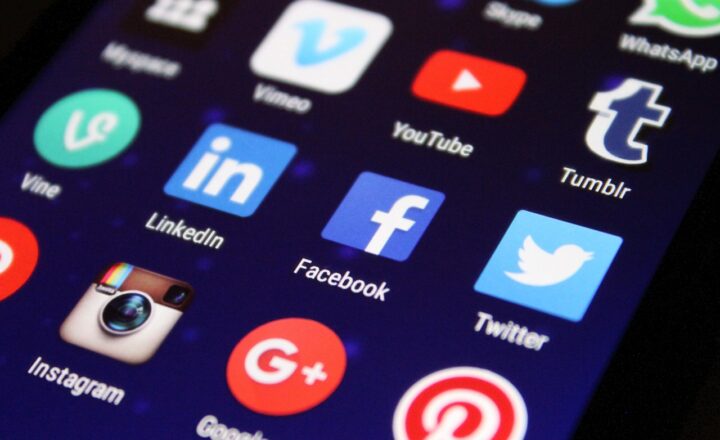The Rise and Fall of MySpace: The Social Media Platform That Defined a Decade
November 12, 2024

MySpace was once the shining star of social media. Launched in 2003, it quickly rose to fame, becoming the most popular social media platform in the world by 2006. For millions of teenagers and young adults, MySpace was not just a social network; it was a digital playground, a means to connect, express creativity, and cultivate friendships. However, with a meteoric rise came an equally dramatic fall.
The story of MySpace is a fascinating chronicle of innovation, cultural significance, and eventual decline against the backdrop of a rapidly changing digital landscape.
1. The Birth of MySpace
MySpace was founded in January 2003 by Tom Anderson, Chris DeWolfe, and a group of co-founders as a response to the growing need for online interaction and community building. The platform allowed users to create personal profiles, connect with friends, and share multimedia content. What set MySpace apart was its focus on personal expression; users could customize their profiles using HTML code, leading to an explosion of creativity that defined the early days of social media.
From its launch, MySpace gained traction quickly. The platform embraced the burgeoning trend of web personalization, allowing users to showcase their interests, music, and photography. In just a few short years, it eclipsed its competitors, becoming the most visited social networking site in the world by 2006, surpassing Google in traffic.
2. The MySpace Experience: A Cultural Phenomenon
The renaissance of MySpace was not merely a technological achievement; it represented a cultural shift in how people interacted online. The platform was an incubator for music, art, and youth culture.
Many bands and artists found their audience through MySpace, fostering a new era of independent music distribution. The likes of Arctic Monkeys, Fall Out Boy, and Lily Allen catapulted into fame, thanks to exposure and fan interaction on MySpace. The site was also a new avenue for self-expression, facilitating personal blogs, poetry, and even fashion statements. The unique customization options allowed users to take ownership of their online presence in a way that felt intimate and authentic.
Additionally, MySpace allowed users to connect based on shared interests, forming communities around specific music genres, movies, and hobbies. For many, it was a space of discovery, encouraging people to explore various aspects of their personalities and social circles.
3. The Turning Point: Enter Facebook
However, the seeds of decline were sown with the emergence of Facebook in 2004. While MySpace allowed for heavy customization and an overwhelming amount of user-generated content, Facebook introduced a cleaner interface and a more streamlined approach to social networking. As social media began to evolve, users gravitated towards Facebook for its simplicity and efficiency.
Facebook’s focus on real-life connections, privacy controls, and a robust news feed made it a more appealing option. It wasn’t long before MySpace began to lose its grasp on the social media domain. By 2008, Facebook’s user base had grown substantially, while MySpace’s numbers began to dwindle.
4. The Factors Behind MySpace’s Decline
Several factors contributed to the decline of MySpace, including:
- Mismanagement: After being acquired by News Corporation in 2005, the focus shifted to monetization rather than innovation. The influx of advertisements and intrusive marketing strategies alienated users, leading to dissatisfaction with the platform.
- Spam and Privacy Issues: In an effort to generate traffic, MySpace became plagued with spam accounts and security concerns. Users faced increasing privacy issues, which deterred new users from joining.
- Loss of Identity: The site’s branding became muddled. As the user base aged, the platform struggled to maintain its relevance among younger audiences, shifting its focus to a more adult demographic and speculative acquisitions that didn’t resonate with existing users.
Roaming advertisements, outdated layout designs, and misunderstandings regarding user feedback culminated in a slow but steady erosion of the MySpace community.
5. MySpace’s Last Attempts to Reinvent Itself
In a desperate move to reclaim its influence, MySpace attempted several overhauls, including a redesign in 2010 that focused on music and entertainment, but these attempts failed to win back users. The emphasis on multimedia integration was an interesting pivot, but it was too late—Facebook’s grasp on the audience was ironclad.
In 2011, MySpace laid off a significant portion of its staff, marking a turning point for the social media giant. The platform continued to lose users, dropping to less than 30 million by 2013. As social media giants emerged and adapted to the changing technological landscape, MySpace could not keep pace.
6. The Legacy of MySpace
Despite its decline, MySpace left an indelible mark on social media culture and online interaction. It is a testament to the ever-changing nature of the digital landscape, highlighting themes of innovation, community formation, and the pursuit of self-expression. The platform paved the way for social media functionality and features that have since become commonplace.
For many millennials and Gen Z users, MySpace was their introduction to social networking, shaping the way individuals communicate online. The nostalgia surrounding MySpace persists, symbolizing a distinct moment in internet history.
In recent years, attempts have been made to resurrect MySpace as a music platform, though it has struggled to regain its former glory. Nonetheless, MySpace remains an important case study in understanding the dynamics of social media and online communities—an embodiment of how quickly popularity can fade in the face of innovation and competition.
Conclusion
MySpace’s rise and fall encapsulate the volatile nature of technology and social media. As we navigate the complexities of modern digital culture, its story serves as a reminder of the importance of innovation, user experience, and the ever-shifting preferences of online communities. Though the platform may no longer dominate the social media landscape, it will always hold a special place in the hearts of those who experienced it during its heyday.
In essence, MySpace transformed the concept of social networking and undoubtedly influenced the platforms that followed. Its struggle for survival in a competitive digital environment continues to inspire discussions around user engagement, brand management, and the future of social media.







